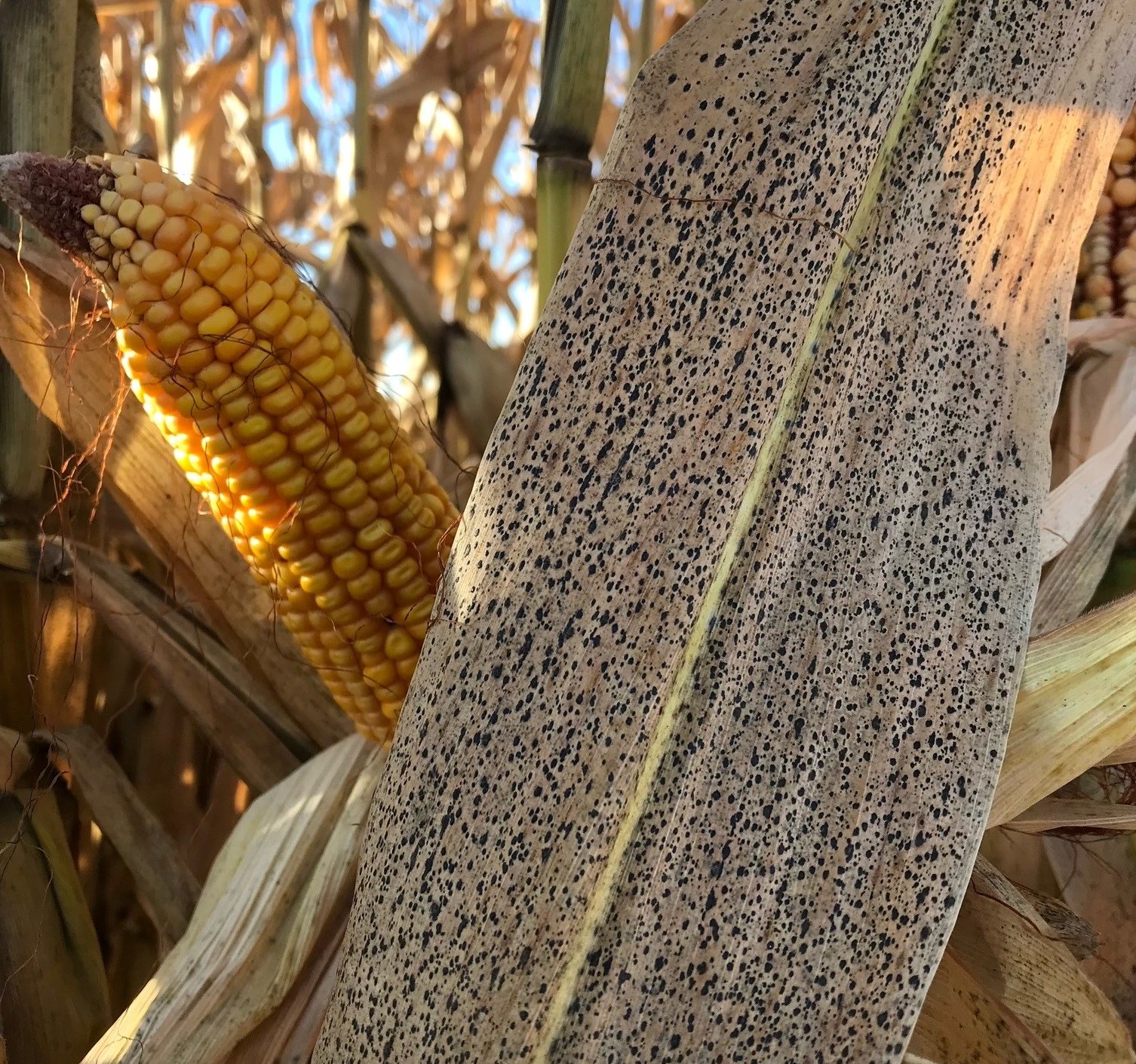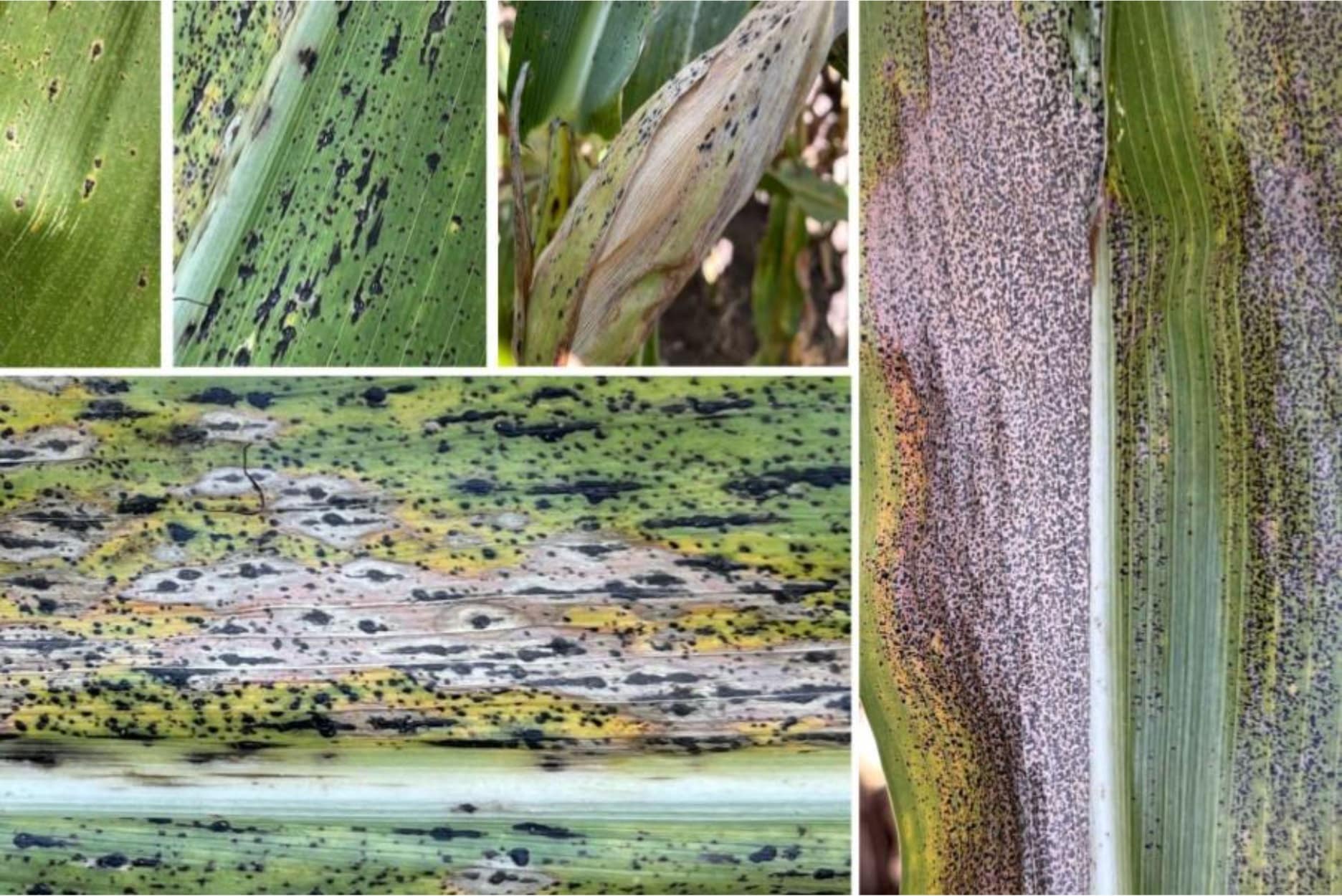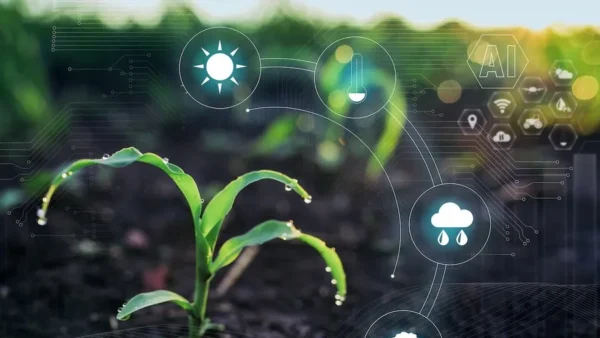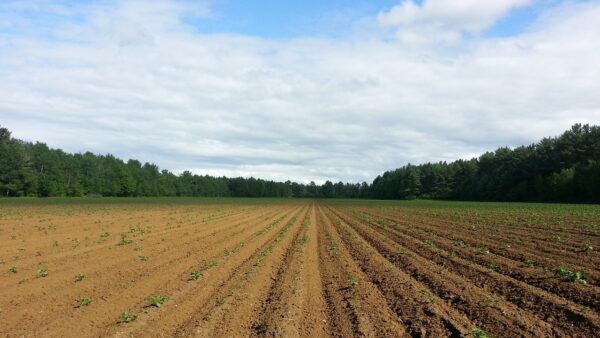At the AgReliant Genetics Tar Spot Summit, growers talk about agronomic management strategies to combat the new disease.
Since first being spotted in 2015 in the Midwest — and becoming more of a nuisance from 2018 onward — tar spot is considered a rather new disease threatening corn crops throughout the season.
Caused by the fungus Phyllachora maydis, tar spot is commonly identified by black, rough circular discolorations on the leaves, husks and stalks of corn plants, according to a release from the USDA ARS in West Lafayette, Indiana. Sometimes, a tan halo surrounds the spore-filled spots, causing a “fish-eyed” lesion. By the time those characteristics appear, typically, it’s too late, and growers will experience a loss of yield from the disease.
“In 2021, [tar spot] affected us pretty significantly on one or two farms,” says Myron Sylling, a grower from Spring Grove, Minn. “It affected all hybrids that year, and we lost 20 bushels per acre on that farm — the harvest stability was terrible.”
Sylling wasn’t the only grower who had difficulty battling tar spot when it first emerged on his farm. Three other growers joined him on a panel at the AgReliant Genetics Tar Spot Summit from Nov. 28-29 — each faced different issues and found different solutions to combat the disease, but none have managed to completely eradicate it from the farm.
Solutions, though, are focused on a systems approach of managing, the four agree.
“This year, we adopted a two pass deal, and that worked very well for us,” says Del Unger, a grower from Carlisle, Ind. “This year was better, and we’re probably one of the few in our area that can say that. We’ll continue to do the two passes — but the concerning part about all this for us is we’re still making two pass application. It’s not a silver bullet — we’re still seeing some infection.”
But, when it comes to management strategies, two pieces really come into play and into focus when talking about tar spot: hybrid selection and fungicide management.
“For us, it comes down to genetic potential in our area — and there’s a lot of different factors you can go into,” says Jon Bauman, a grower based out of Kendallville, Ind. “Those good racehorse hybrids have worked well in our area. Between 2021 and 2022, we had a devastating time with tar spot, and it really came into the field late this year. It wasn’t quite as much of a problem, whereas last year, one of our hybrids fell flat on its face. If tar spot is managed well, those racehorses can keep up.”
When it comes to disease pressure, growers are prioritizing plant health in their varieties. That’s just as true when it comes to variety selection for tar spot currently.
“Disease pressure has been high on our list for a long time, especially when you’re pumping water on high humidity,” Unger says. “Plant health has been paramount, and it’s remained that way. We still plant a racehorse hybrid there, but a majority of our hybrids are what I’d call a workhorse.”
Instead of focusing on the racehorses that generate high, high yields, Unger finds value in varieties with more stability and overall disease resistance. By focusing on overall disease resistance, Unger finds that he’s still able to achieve high yields.
In addition to hybrid selection, fungicide use and timing are becoming a more obvious need for dealing with tar spot.
“I think fungicides and different modes of action are paramount to plant health,” says Rod Jurgens, a grower based out of Hopkinton, Iowa. “We’re not happy with 240 bushels per acre — I want 280 bushels per acre. I’m a strong proponent of fungicide.”
Sylling believes fungicide is going to be used 100% on his operation in 2023, but for his battle against tar spot, it’s all based on the return on investment.
“It’s going to be used, but I’m going to continue to do checks — at the point where that ROI is flat or I’m not making money doing it, it’s gone,” he says. “But I’m a little worried that it’s going to take a while for breeding to get to that point.”
Read more about the latest plant breeding research at:
Multi-Stack Soybean Traits Look to an Ambitious Future











